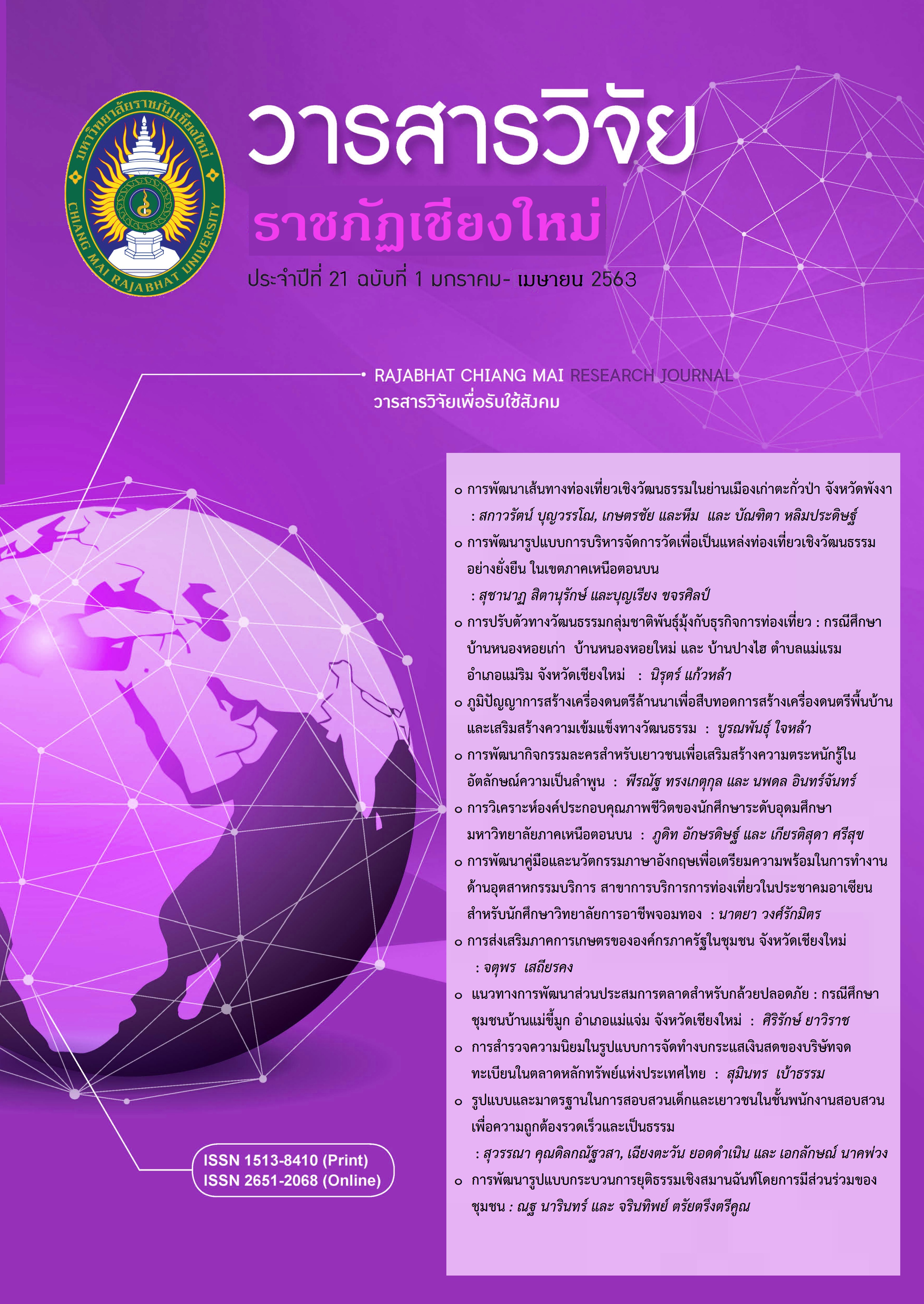Patterns and Standards for Investigating Children and Youth in the Inquiry Official for Accuracy Fast and Fair
DOI:
https://doi.org/10.14456/rcmrj.2020.235713Keywords:
Investigating, Children and youth, In the Inquiry officialAbstract
This research the purpose is to study extract knowledge and methods of investigative officers for correct and effective juvenile investigations and prepare a manual to investigate juvenile delinquency to the inquiry officials under the Royal Thai Police. To be used as a guideline for operations Is a qualitative research By using in-depth interviews with the sample population, Include Public prosecutor, Inquiry official, Almoner and Legal counsel 95 people and focus group discussion of 20 people. Content analysis.
The study found that 1) The format and standards for the correct investigation. The inquirer must proceed correctly, completely, in accordance with the law, every step and have complete documentation for each offense. 2) The format and standards for quick investigation. The investigative officers must put the children in the judicial process must spend the least time. In which each case would have different difficulty there is no fixed format. And 3) Format and standards for fair investigation the inquiry official must act openly. Transparent, verifiable, without bias, providing equal opportunity for all parties no discrimination and legality do not use cruelty methods torture, coerce or deceive or convince the mind to act in any way.
For this juvenile investigation guide the researcher brought knowledge that was developed into a manual for using as guideline to be easy to learn and practice.
Downloads
References
ณัฐนันท์ ทองทรัพย์. (2558). ปัญหาการบังคับใช้กฎหมายการดำเนินคดีเด็กและเยาวชนในคดีอาญาศึกษาเฉพาะพื้นที่ สถานีตำรวจภูธรเมืองพิษณุโลก. วารสารวิจัยมหาวิทยาลัยเวสเทิร์น มนุษยศาสตร์และสังคมศาสตร์, 1(1), 32-41.
วารุณี จันทร์ทอง. (2556). มาตรการในการสอบสวนเด็กและเยาวชนซึ่งกระทำผิดอาญาตามพระราชบัญญัติศาลเยาวชนและครอบครัวและวิธีพิจารณาคดีเยาวชนและครอบครัว พ.ศ. 2553. (วิทยานิพนธ์หลักสูตรนิติศาสตรมหาบัณฑิต). มหาวิทยาลัยรามคำแหง. กรุงเทพมหานคร.
วัชรินทร์ ปัจเจกวิญญูสกุล. (2540). มาตรฐานการปฏิบัติต่อเด็กที่ถูกกล่าวหาว่ากระทำผิด. บทบัณฑิตย์. 53(4), 116-122.
สถาบันบัณฑิตพัฒนบริหารศาสตร์. (2557). แนวทางปฏิรูปประเทศไทย. กรุงเทพมหานคร: สถาบันบัณฑิตพัฒนบริหารศาสตร์.
สมัย ศิริทองถาวร. (2541). ปัญหาพฤติกรรมทางสังคมและเชาว์ปัญญาเด็กและเยาวชนสถานแรกรับในสถานพินิจและคุ้มครองเด็กและเยาวชนภาคเหนือ. เชียงใหม่: ศูนย์ส่งเสริมพัฒนาการเด็กภาคเหนือ.
สมชัย หิรัญญะวณิชย์. (2557). คำแถลงนโยบายของคณะรัฐมนตรี พลเอก ประยุทธ์ จันทร์โอชา นายกรัฐมนตรี แถลงต่อสภานิติบัญญัติแห่งชาติ. กรุงเทพมหานคร: สำนักพิมพ์คณะรัฐมนตรีและราชกิจจานุเบกษา.
สุมนทิพย์ จิตสว่าง และ ปิยะพร ตันณีกุล. (2560). การประเมินผลการดำเนินงานของกระบวนการยุติธรรมตามพระราชบัญญัติศาลเยาวชนและครอบครัว และวิธีพิจารณาคดีเยาวชนและครอบครัว พ.ศ. 2553. วารสารสังคมศาสตร์, 47(1), 171-192.
สำนักงานเลขาธิการสภาผู้แทนราษฎร. (2560). ประกาศคณะรักษาความสงบแห่งชาติ ฉบับที่ 63/2557 ลงวันที่ 12 มิถุนายน 2557 เรื่อง นโยบายเกี่ยวกับกระบวนการยุติธรรมของรัฐ. สืบค้นจาก https://library2.parliament.go.th /giventake/ncpo.html
สำนักงานคณะกรรมการกฤษฎีกา. (2560). พระราชบัญญัติศาลเยาวชนและครอบครัวและวิธีพิจารณาคดีเยาวชนและครอบครัว พ.ศ. 2553. สืบค้นจาก https://www.krisdika.go.th/librarian/get?sysid=764847&ext=htm
สำนักงานคณะกรรมการกฤษฎีกา. (2560). ประมวลกฎหมายวิธีพิจารณาความอาญา. สืบค้นจาก https://www.krisdika.go.th/librarian/get?sysid=570066&ext=htm
Nonaka, I. and Takeuchi, H. (1995). The Knowledge-Creating Company: How Japanese Companies Create the Dynamics of Innovation. New York, Oxford: Oxford University Press.
Downloads
Published
How to Cite
Issue
Section
License
1. Articles, information, content, images, etc published in the “Community and Social Development Journal” are copyrighted by the Community and Social Development Journal, Chiang Mai Rajabhat University. In order to properly distribute the articles through print and electronic media, the authors still hold the copyright for the published articles under the Creative Commons Attribution (CC BY) license, which allows the re-distribution of the articles in other sources. References must be made to the articles in the journal. The authors are responsible for requesting permission to reproduce copyrighted content from other sources.
2. The content of the articles appearing in the journal is the direct responsibility of the article authors. The editorial board of the journal does not necessarily agree with or share any responsibility.














